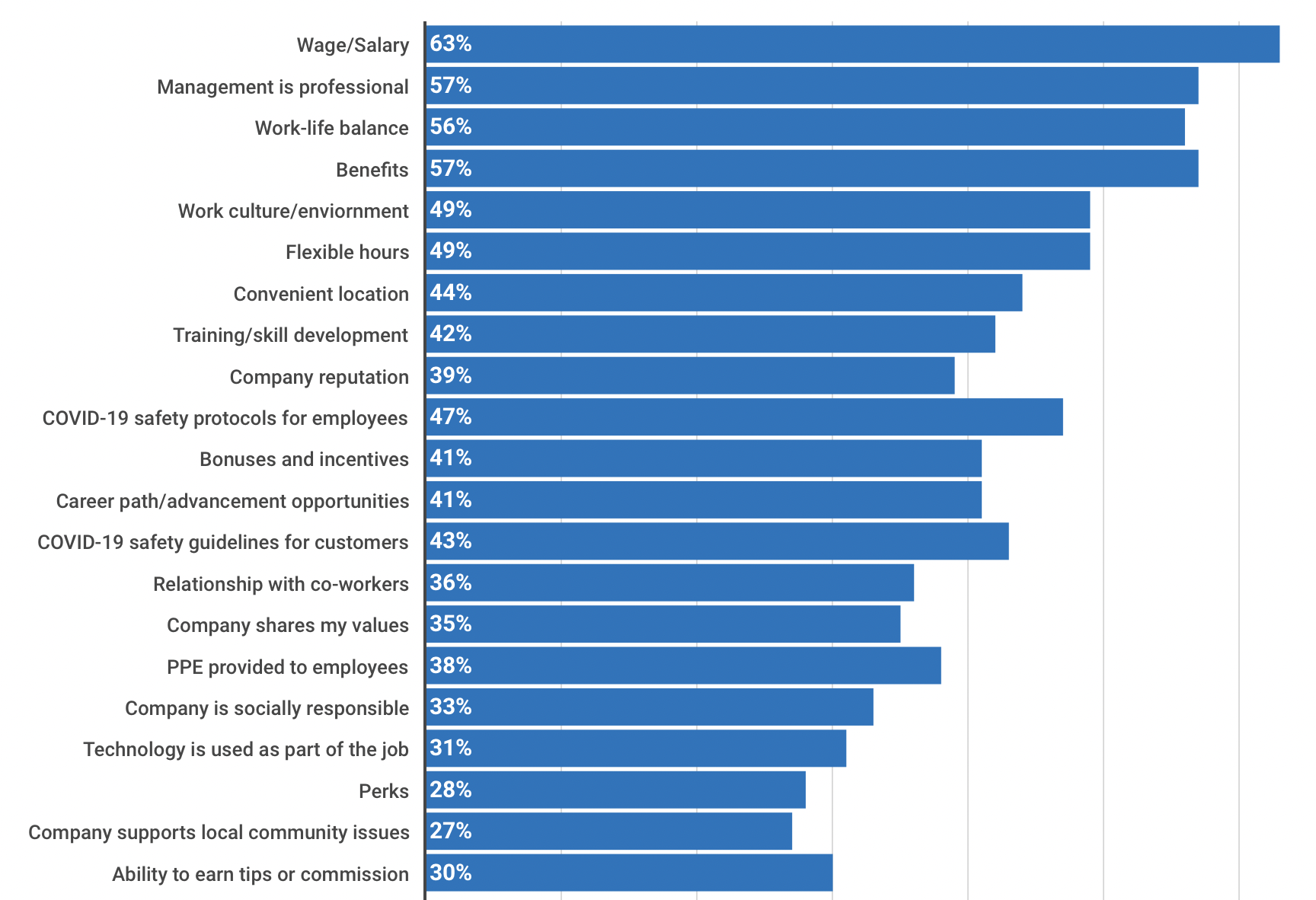Over the past two years, the restaurant industry has had to deal with challenge after challenge after challenge—often with barely any time in between to recover. From dining room closures to pivoting to takeout and delivery business, operators were faced with many setbacks—and as the economy bounced back and restaurants were able to get back to some semblance of normalcy, yet another challenge arose—labor shortages.
According to data , the unemployment rate in the restaurant industry as of September 2021 was 7.5%—down from its worst, but still well above pre-pandemic rates, an indication that the labor crunch isn’t going anywhere anytime soon.
With so many operators facing short-staffing issues, having trouble finding and retaining employees and dealing with the financial ramifications of turnover, it’s more important than ever for restaurants to focus on keeping employee morale high so turnover is limited. With so many open positions and many workers choosing to leave the restaurant industry for other employment, operators have to seek new strategies to retain employees so their training (and re-training) costs are manageable.
How much does turnover cost operators?
The cost of turnover is multi-faceted. From the costs of recruiting and hiring new employees to the costs associated with training, plus the cost related to productivity loss due to having less-experienced staff on hand, the numbers add up fast. The Center for Hospitality Research at Cornell estimates that the cost of employee turnover averages about £4916 per person for a typical front-line employee, including pre-departure costs; recruiting new candidates; selection (interviewing and callbacks); orientation and training; and productivity loss. Most of the cost of turnover (52%) comes from productivity loss—that is, the amount of money or profit lost by a) needing to have more employees on the schedule to make up for less-experienced staff and b) potentially slower service/less productivity from the new employee as they get up to speed
Of course, turnover also costs in overall morale; the fewer staff there are, the more overwhelmed existing employees can get—and with the remaining employees facing burnout, this can cause even more turnover. If more employees quit, the remaining workers may start looking for new work, too. In other words, it is critical to keep employees happy with their jobs and not overwhelmed or overworked.
To avoid burnout and stress among their staff, it’s important for operators to determine factors that help keep employees engaged and happy.
Employee retention factors
There are a handful of factors that contribute to how happy someone is with their workplace and their job. Salary and training are of course important, but other aspects, such as flexible scheduling, COVID-19 safety initiatives, career path development and a convenient location also contribute to workers’ satisfaction and morale—and in turn, their likelihood to stay with an employer.
Operators should focus on strengthening the things about their workplace that employees enjoy and reduce the things that cause workers stress or dissatisfaction.
There are a number of things that help keep employees satisfied, including:
Change this Subheading
Image Box Title
Change this description

Wage and salary are (perhaps unsurprisingly) of paramount importance to employees, and work culture is also a key factor in job satisfaction. One of the areas of restaurant work where these two factors intersect is with tips. When tips are pooled among staffers, it can get complicated making sure that each employee gets the correct amount.
Workplace transparency is extremely important when it comes to how tips are handled. A number of studies have shown that employee trust and gratuity transparency are key for employee satisfaction and morale, and in order for workplaces to ensure transparency, a dedicated system needs to be used so that employees can see how tips are split up and distributed.
TipHaus offers the ideal solution, with a dedicated app that shows employees how every tip entered is distributed among staff, reducing the number of disagreements, increasing employee-management trust and boosting overall transparency.
Accurate and fair tip distribution
Tip pooling and tip sharing can get complicated, especially if different positions get different percentages of the pot. For instance, if gratuities are apportioned differently among dishwashers, bar staff and waitstaff, it can be easy for errors to occur, especially if tipshare is done manually. Those problems can extend beyond upsetting the staff—they can also cause legal problems for restaurants, should employees make complaints to the labor board about incorrect wages.
We recommend using Revel Systems tip pooling feature found in the Management console as this will allow you to accurately divide and share tips to your various staff departments.




